Toward the end of October 2008 stories about a pair of albino Fox Squirrels on the campus of the University of North Texas in Denton, Texas began appearing on the local and national news outlets.
Some of the stories alluded to a location—the intersection of Eagle Drive and Avenue A—as the best place to find the rare albinos. I knew this intersection, and almost immediately felt a desire to go to Denton and try to see these squirrels for myself.
When I finally made the trip to Denton a couple of weeks later, I was not hopeful that I would be able to find the squirrels. If my memory served me well, there would be literally hundreds of trees at this intersection alone. I would need a good deal of luck for this to be a successful outing.
I arrived in Denton late Sunday afternoon, and quickly made my way to the intersection of Eagle Drive and Avenue A. Just as I had remembered, there were trees everywhere. To make matters worse, this intersection borders commercial and residential areas, as well as the UNT campus.
I had no idea where to begin looking for the squirrels, and I decided to park so that I could search for the albinos on foot. Then, as I was driving around looking for a suitable parking space, I had the good fortune of noticing someone sitting in the middle of a vacant lot across the way from the university.
The man had a camera with a telephoto lens, and was taking pictures of something in the trees behind the vacant lot. Luck was with me! I knew there would only be one thing at that intersection that would inspire someone to sit in the middle of a field to photograph!
I quickly pulled into a parking lot across the way (so not to disturb the photographer), and began watching the scene through by own telephoto lens. I didn’t have to wait long for one of the albinos to crawl down out of a tree and scamper across a chain-link fence.
I took several pictures from across the way, all at the limits of what my telephoto lens could handle. None of the pictures turned out very well.
When the photographer in the vacant lot finished up and was preparing to leave, I drove over and parked in an adjacent apartment complex. I spoke to the photographer briefly, and it turned out that he was a fellow named KT Shiue. His named was mentioned frequently in the news stories about the albino Fox Squirrels, and he is the person probably most familiar with the squirrels at UNT. He has many great photos of these and other albino squirrels that have been found at the UNT campus since 2003. His pictures can be seen at www.flickr.com by searching for KT Shiue. They are excellent and worth a look.
I went back to Denton the following weekend to try again to get some quality pictures of one or both of the albino Fox Squirrels. I arrived early on Saturday morning, and set up in the middle of the vacant lot where I had seen KT taking pictures on my last visit to the area.
It was cold on this morning, near 45 degrees with a brisk wind blowing. And when I arrive there was no sign of the albino squirrels to be seen. There were, however, plenty of other Fox Squirrels in the area, and I passed the time by photographing a number of them.
After over an hour of waiting with no sign of the albino squirrels my legs were beginning to cramp and I was thinking of giving up. I stood up to stretch my legs when I caught a glimpse of white fur poking out of a squirrel nest just above where I had been sitting. The squirrel came out of the nest, briefly, and then went back in. I decide to wait around a little longer.
This time I didn’t have to wait long for the albino squirrel to reemerge. But, the albino squirrel did not linger. Instead, he quickly navigated the tree branches into other yards and away from my ability to follow. I did not get the quality of pictures I wanted on this day, but I was encouraged and decided to come back again the following day for one more try.
I came back to Denton on Sunday morning, and spotted one of the albinos as I was pulling into the parking lot. The albino was just going about its business and seemed in no hurry to leave.
I watched the first albino for almost an hour as he generally stayed too far away from me to photograph. I was alerted to the arrival of the second albino when I heard him barking at me from a branch just above where I was sitting.
The two albino squirrels moved in and out of the area repeated over the next couple of hours. I took as many pictures as I could.

I didn’t have to wait long for one of the albinos to crawl down out of a tree and scamper across the chain-link fence as seen in this picture.


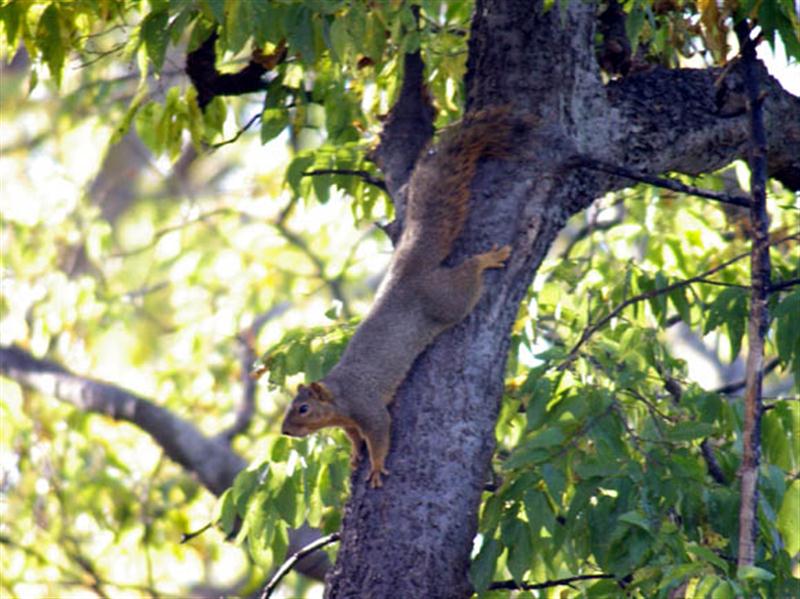



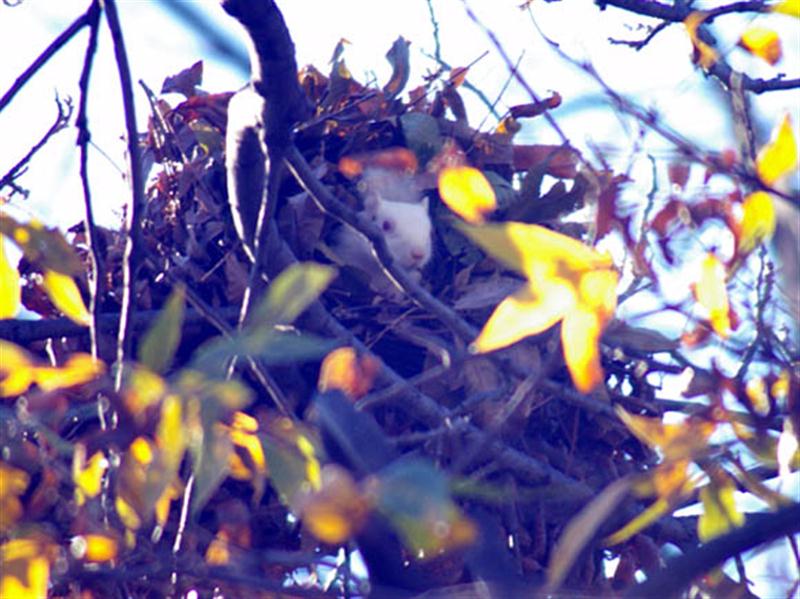




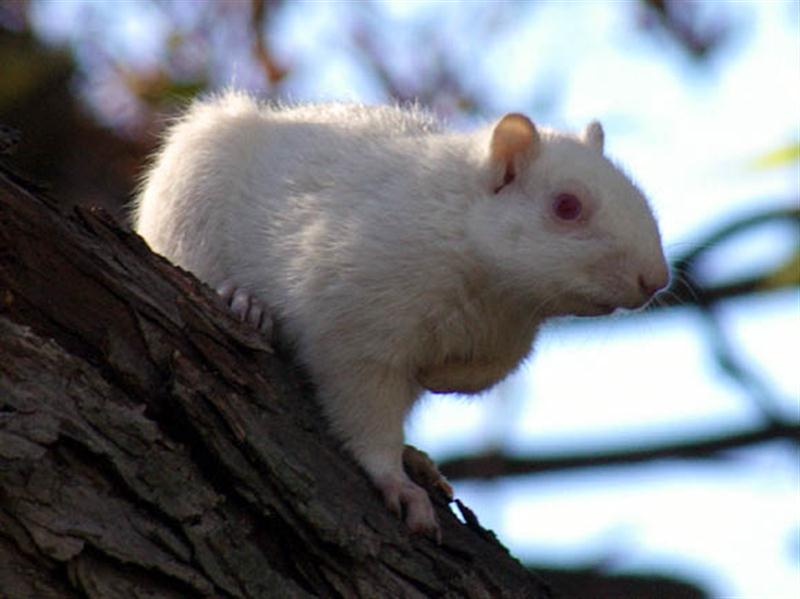











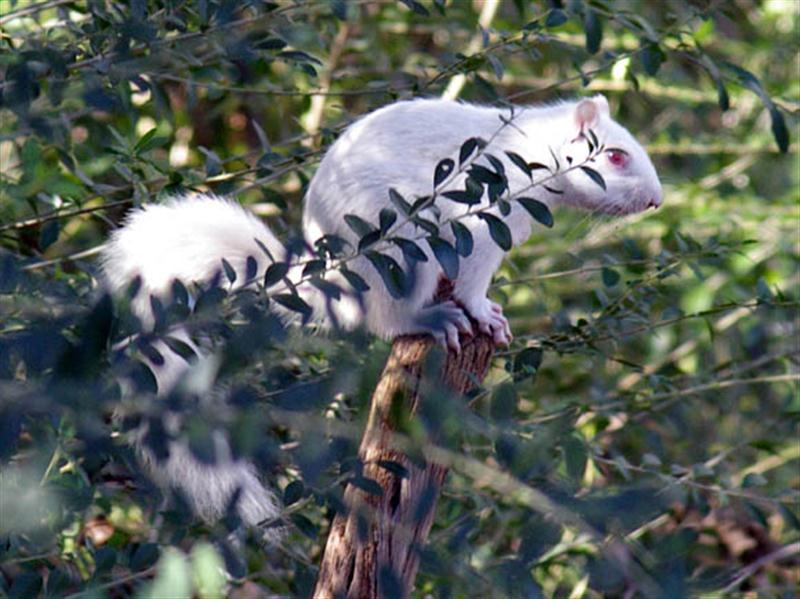
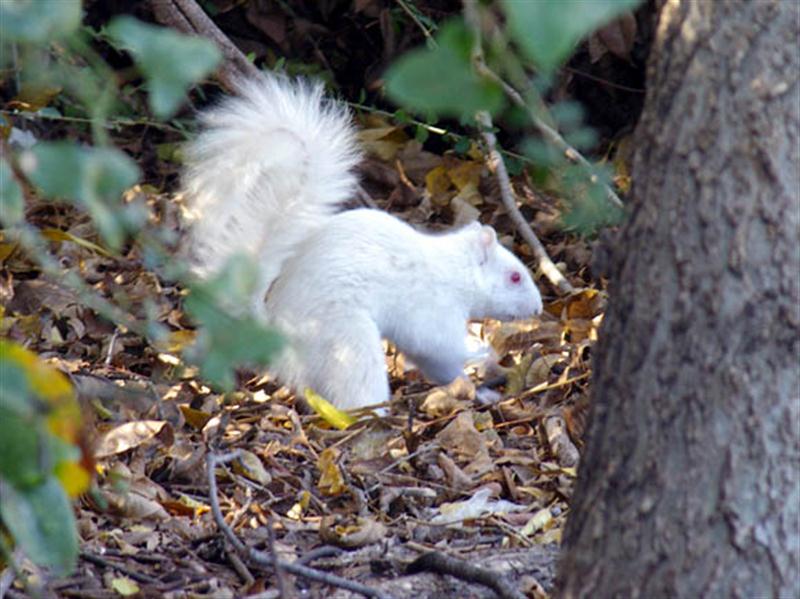





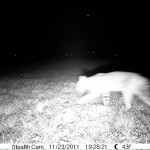


What stunning animals! Just gorgeous.
This is really cool. Do you know if the albinos are still in Denton?
The last time I corresponded with K.T. Shiue he reported to me that there has been no sign of the albino squirrels since May of 2009. No one is sure what happened to them.
Yes! I saw an albino squirrel at Starbucks today. She/he has a nest in the tree at the front corner of the building on University Drive. I wish I could post the pictures I took of it today!
I’d like to send you a photo of a white squirrel with brown eyes and tail spotted in Plano, Texas. Obviously not an albino, but would it be a pibald?
I know that I am super late to this post, but there is a solid white squirrel that has been in my neighborhood for at least 2 years. I live in Grand Prairie, TX. He could be older, but I became aware of him at the start of the pandemic. He’s a full grown male. No doubt about that. I have snapped his pic probably 20+ times.